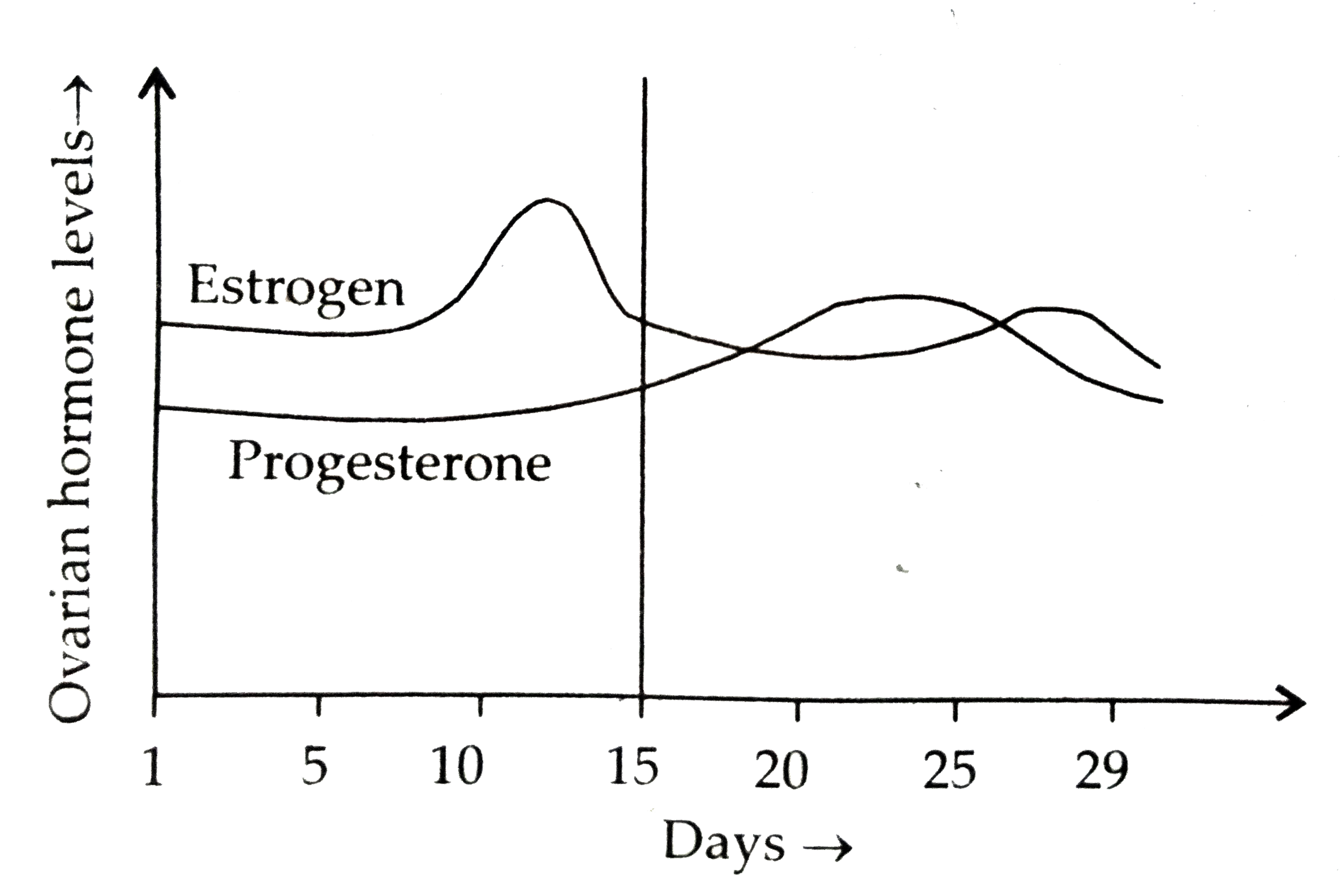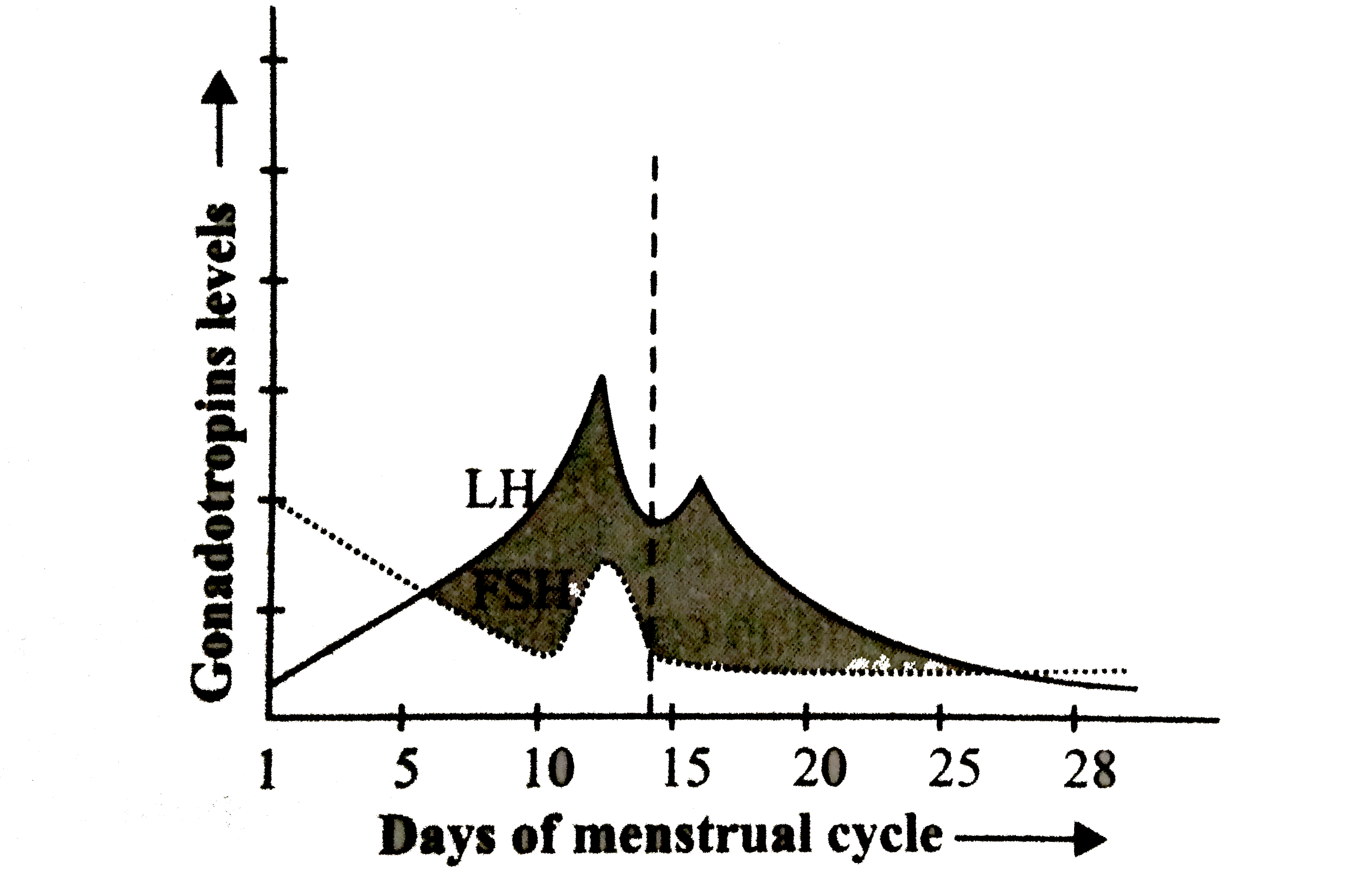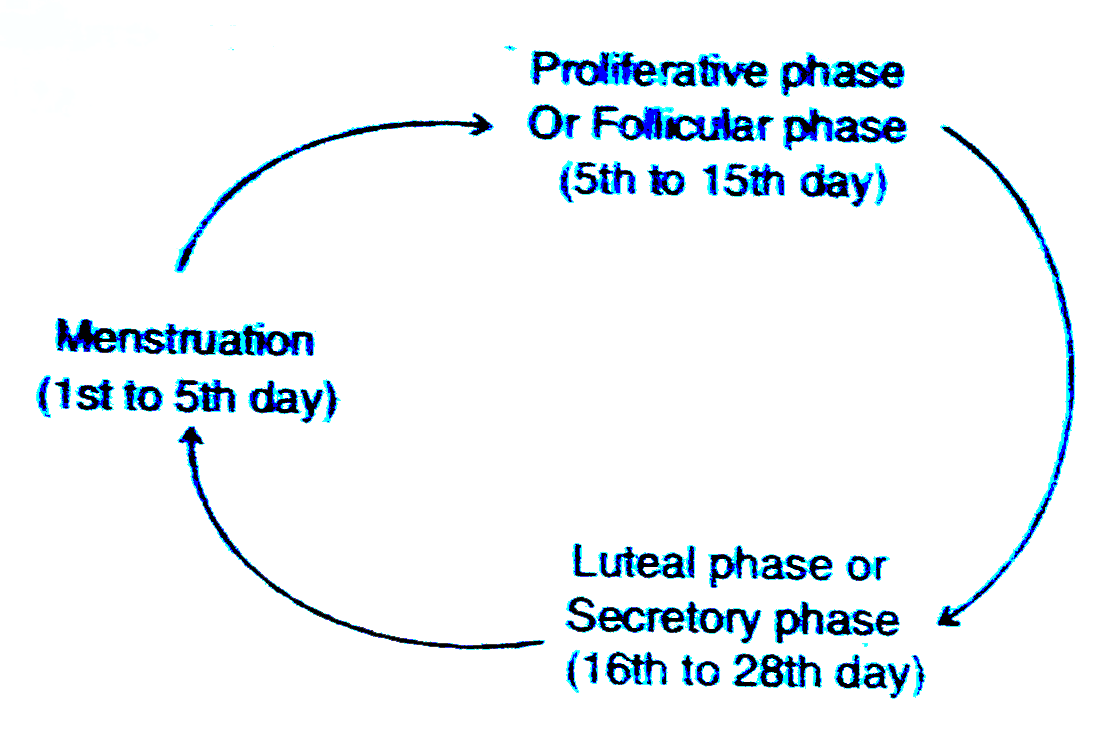 Read the graph given above and correlate the uterine events that take place according to the hormonal levels on
Read the graph given above and correlate the uterine events that take place according to the hormonal levels on
(i) 6 - 15 days
(ii) 16 - 25 days
(iii) 26 - 28 days (if the ovum is not fertilised )
(b) Specify the sources of the hormones mentioned in the graph.
Step by step video & image solution for Read the graph given above and correlate the uterine events that take place according to the hormonal levels on (i) 6 - 15 days (ii) 16 - 25 days (iii) 26 - 28 days (if the ovum is not fertilised ) (b) Specify the sources of the hormones mentioned in the graph. by Biology experts to help you in doubts & scoring excellent marks in Class 12 exams.
Similar Questions
(a) The diagram given below is that of a developing human foetus in the womb. Study the same and then answer the questions that follow :

(i) Name the parts '1' and '5' indicated by guidelines.
(ii) What term is given to the period of development of the foetus in the womb ?
(iii) How many days does the foetus take to be fully developed ?
(iv) Mention two functions of the part labelled 2 other than its endocrine function.
(v) Name the hormone (any one) produce by the part labelled 2
(vi) What is the function of the part marked 3 ?
(b) Give the exact location of amnion.
[ICSE 2011, 2014]View SolutionStudy the diagram given below and then answer the questions that follow :

(i) Name the part labelled A. Name any two hormones produced by the part labelled A.
(ii) What happens to the part labelled B if :
(1) fertilisation takes place?
(2) fertilisation does not take place ?
(iii) Where does fertilisation occur ?
(iv) Draw a neat diagram of the human sperm as seen under high magnification and label the following parts: (a) Acrosome (b) Mitochondria.View Solution
Knowledge Check
- Question 1 - Select One

Study the garaph carefully and correlate the hormone levels on
(i) 1-5 days
(ii). 12-14 days
(iii). 25-28 days (if the ovum is not fertilised)A(i) LH decreases and FSH increases
(ii). LH increases and FSH decreases
(iii). LH level maintained and FSH level increasesB(i). LH increases and FSH decreases
(ii). LH decreases and FSH increases
(iii). LH level increases and FSH level maintainedC(i). LH increases and FSH decreases
(ii). LH peaks and FSH peaks
(iii). LH level decreases and FSH level maintainedD(i). LH peaks and FSH peaks
(ii). LH increases and FSH decreases
(iii). LF level decreases and FSH level maintained.
Explain the events in a normal woman during her menstrual cycle on the following days :
(a) Pituitary hormone levels from 8 to 12 days.
(b) Uterine events from 13 to 15 days.
(c) Ovarian events from 16 to 23 days.View SolutionExplain the events in a normal woman during her menstrual cycle on the following days.
Ovarian event from 13-15 days
(b) Ovarian hormones level from 16 to 32 days
(c) Uterine events from 24 to 29 days.View SolutionGiven below is a diagram of the reproductive system of a human female :

(i) Name the parts numbered 1-6.
(ii) Normally after how many days does an ovary release an egg?
(iii) Where are the sperms released during coitus?
(iv) What do the sperms do after being released ?
(V) What is the function of the organ numbered 5 ?
(vi) How many days does it normally take from the fertilisation of the egg up to the birth of the baby?View SolutionDue to hectic and busy schedule, Mr. Angad made his life full of tension and anxiety. He started taking sleeping pills to overcome the depression without consulting the doctor. Mr. Deepak, a close friend of Mr. Angad, advised him to stop taking sleeping pills and suggested to changes his lifestyle by doing Yoga, meditation and some physical exercise. Mr. Angad followed his friend's advice and after few days he started feeling better.
After reading the above passage, answer the following :
(i) What are the values (at least two) displayed by Mr. Deepak?
(ii) Why is it not advisable to take sleeping pills without consulting doctor?
(iii) What are tanquilizers? Give two examples.View SolutionThe following is the illustration of the sequence of ovarian events (a - i) in human female.

(i) Identify the figure that illustrates ovulation and mention the stage of oogenesis it represents.
(ii) Name the ovarian hormone and the pituitary hormone that have caused the above mentioned event.
(iii) Explain the changes that occur in the uterus simultaneously in anticipation.
(iv) Write the difference between 'c' and 'h'
(v) Draw a labelled sketch of the structure of a human ovum prior to fertilization.View SolutionThe events of the menstrual cycle are represented below. Answer the questions following the diagram.
(i)State the levels of FSH , LH and Progesterone simply by mentioning high or low , around 13th and 14th day and 21st to 23 rd day .
(ii)In which of the above mentioned phases does the egg travel to the fallopian tube ?
(iii)Why is there no menstruation upon fertilization ?
 View Solution
View SolutionThe events of the menstrual cycle are represented below. Answer the questions following the diagram.
(i)State the levels of FSH , LH and Progesterone simply by mentioning high or low , around 13th and 14th day and 21st to 23 rd day .
(ii)In which of the above mentioned phases does the egg travel to the fallopian tube ?
(iii)Why is there no menstruation upon fertilization ?
 View Solution
View Solution

